#unknown decade 19th century
Text


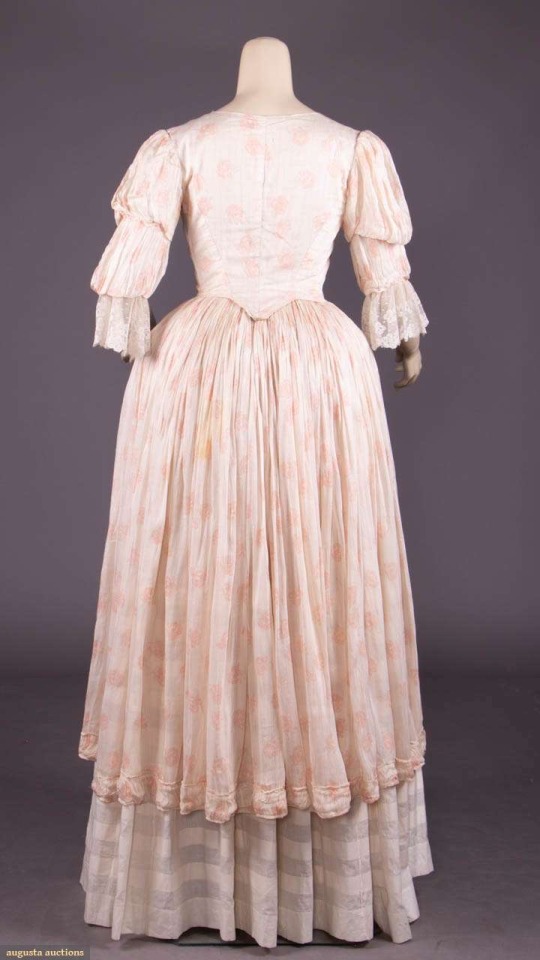
White 18th Century Style Fancy Dress Costume, Late 19th Century.
Augusta Auctions.
#white#womenswear#extant garments#dress#silk#19th century#fancy dress#costume#augusta auctions#late 19th century#unknown decade#unknown decade 19th century
27 notes
·
View notes
Text







nabi musa (prophet moses) mosque/maqām in jericho governorate, palestine. local muslim tradition holds that moses was buried here. where exactly this tradition comes from is unknown.
every year, one friday before good friday in the greek orthodox calendar, a yearly pilgrimage from jerusalem to nabi yusha takes place, after which a festival in moses's honor is held. this began in the mid-19th century, though palestinian tradition holds that its origins lay in saladin's recapture of jerusalem from crusaders in 1187. this continues to hold symbolic importance today. the structure itself was likely built by mamluk sultan baybars eight decades later.
since the 1967 occupation, the pilgrimage was prohibited for 20 years (most likely due to association with the 1920 nabi musa riots) before being permitted again. since then, it's been prohibited on and off - most recently after the second intifada in 2000, before being renewed in 2007.
182 notes
·
View notes
Note
Is it just me, or Americans and Europeans depict the standard, stereotypical fairy tale setting differently?
In my opinion, Americans depict the fairy tale setting as closer to the middle ages. The Fairy Tale Setting is often just a more colorful standard, almost Tokien-like, Fantasy Setting.
Meanwhile, in actual European adaptations of said tales, the stereotypical fairy tale setting is closer to the 18th, 19th century, with the architecture being the only thing vaguely medieval
Yes, I actually do believe as such. Mind you, I cannot speak for all of Europe - mainly France and a handful of other countries I am vaguely aware of adaptations (like England or Germany).
And I believe it is due to two specific things.
A) The very "American" view of fantasy. I mean, we have been repeating and endlessly talking about it for decades now - but for Americans everytime there is something fantasy or magical it is either "standard European medieval setting" either "modern-day America". And when I say "standard European medieval setting", it is this sort of idea and phantasm American built of a vaguely European setting which mixes various countries of Western Europe (Americans only have taken recent interest in other parts of Europe, such as Northern or Eastern, due to the success of things like "Midsommar" and folk-horror and whatnot), and various eras of the Middle-Ages (the Middle-Ages were divided into three specific period quite different from each other), with a good handful of things that were not from the Middle-Ages (like the witch-hunts, for example, they were Renaissance, not medieval).
Of course it is due to a mix of general ignorance about Europe (or any part of the world that is not the USA), and of not actually caring about the original setting since their point is either to parody/reinvent the fairytales in lighter/darker ways, or prove that theses stories are "timeless" and can invent outside of any specific context (which does greatly benefit Americans since like that they can snatch anything they like). Mind you it isn't something universal - take the Disney movies for example. They might not be quite exact, but at least they made a neat effort to evoke different cultures and different eras of Europe. It is very obvious that Disney's Snow-White, Cinderella and Sleeping Beauty take place in various points of Europe's history and in different countries (Snow-White's visual influence by German furniture and statues versus the nods to French culture in Cinderella ; Sleeping Beauty's medieval illumination visual versus the more modern royal outfits of Cinderella, etc...). But it is an effort that got completely lost through time (and I think it can be shown in how, when Disney made "Enchanted", their fairytale setting was turned into a random fantasy setting outside of time and space - it did reflect quite well how people saw the fairytale world at the time).
And you know what is even worse? This "random medieval setting" you speak of is NOT even Tolkien's! Tolkien setting was not medieval in the slightest, and doesn't look like your usual "medieval setting". Just look at the visuals of the Lord of the Rings movie, compare it with some "random fairytale setting" and you see the huge gap. If anything, Tolkien's world is more of a "Dark Ages" (you know, this unknown gap between Antiquity and Middle-Ages) feeling than anything, due to mixing Ancient Scandinavia with Ancient Greece and Dark Ages Arthurian Britain.
But... when you think about it, that the Americans would create such an unclear and artificial setting for their fairytales make sense, since this is literaly what "their" fairytales were compiled as. I'll explain: when you ask an American to list you fairytales, when you see the fairytales used in the American media, it is a Frankenstein-creature. You've got the brothers Grimm and Charles Perrault and Andersen and Joseph Jacobs and nursery rhymes and some Asbjornsen and Moe fairytales... Their exposition to fairytale was by compilations of stories literary and folkloric, from different centuries and different countries, mixed together as one. As such... it makes sense for them a fairytale world would look like a pile of mashed-potatoes in terms of history-geography. Because they have to build a world that mix all of these stuff as one... (Plus something-something about the Americans being fascinated by the Middle-Ages because they did not have one?)
B) The Europeans are very "conscious" about fairytales. I will almost say "self-conscious".
Europeans are bound to always test and try various time-eras, fashions and context for fairytales due to a set of three reasons.
1) We have centuries of "traditional medieval imagery" that the Americans lack. Since our fairytales were published between the 17th and 19th centuries - some even by the 20th - Europe already underwent the whole "Random medieval setting" phase through popular imagery and children book and whatnot. America just begun it from the 19th/20th century - we have been at it for two, three more centuries. So today we are moving forward (and in general, while there are many aspects Europe is "late" compared to the USA, in many other ways Europe is "in advanced" compared to the USA, just because of how "young" this country's history is).
2) We are aware of the context of our own fairytales. Due to the language barrier, for example, we know every time a story comes from somewhere else. We have folktales compilations classified by countries and regions. And everytime we bring up a specif set of fairytales, we bring up the life, job and time-era of the fairytale tellers (Perrault, Grimm, Andersen, which are our "national treasures" - unlike Americans for which they're just "yeah little foreign guys we see in the distance"). As such when the French talk about Cinderella or Puss in Boots, the very images of Renaissance are brought up, the same way a German will immediately think of the Napoleonian wars and the post-Napoleon era when thinking of the Grimms - even though the fairytales are supposed to be in the "pseudo-medieval" setting.
3) Europe has been flooded and dominated by the American media when it comes to fairytales. As such we are very aware and accustomed to the "pseudo-medieval" setting popularized by America, and when Europeans try to do their own thing, they usually try to set themselves apart from it, due to knowing how cliche and Americanized this already is. Something very similar happened with French fantasy literature for example - French fantasy books are always trying to stand away from the "cliche American fantasy book" precisely because we are flooded with them and they form the bulk of our fantasy literature, so as such we are very aware of the flaws and stereotypes and expectations coming with the genre... It also doesn't help that most of the castles and "old-fashioned" architecture around Europe is not medieval per se (or that the medieval architecture is for example very impractical when it comes to filming movies), and we have much more Renaissance buildings and the like. In France for example most castles are Renaissance-era. "Real" medieval castles (as in medieval castles not "remade" by Renaissance or modern designers) are much rarer, or not as well preserved as the Renaissance ones.
Anyway this post got way bigger than I intended, but if you ask me some of my thoughts, here they are - mind you they are just my thoughts and I can't speak for every European. I am just one little eye and one little mind in a big big world... But that's the things I am led to believe.
#fairytale adaptation#ask#fairy tales#fairytales#american fairytales#disney fairytales#fairytale cinema#fairytale adaptations
38 notes
·
View notes
Text





Berlin had become the “gay capital of the world,” a city with a booming queer nightlife scene and the center of new academic ideas calling for greater acceptance of homosexuality and gender non-conformity.
To the Nazis, homosexuality represented a “threat” to the “Aryan” race’s survival that needed to be stamped out. Although male homosexual activity had been technically illegal in Germany since the 19th century, it was generally tolerated and even celebrated prior to Adolf Hitler’s ascension to power in 1933.
The Nazis began their anti-queer purges by targeting clubs, societies and Magnus Hirschfield’s renowned sexology research institute, burning the books in its library. Decades of pioneering work and community life had been erased.
By 1935, Paragraph 175 of the German penal code was revised to include a harsher sentence and criminalize virtually any kind of male same-sex intimacy.
Between 1933 and 1945, an estimated 100,000 men were arrested for violating Nazi Germany’s law against homosexuality, and of these, approximately 50,000 were sentenced to prison. An estimated 5,000 to 15,000 men were sent to concentration camps on similar charges.
In the concentration camps, they were subjected to barbaric tortures, including sexual abuse, castration and medical experiments. The other prisoners also ostracized them. Overall prospects for gay prisoners were poor: an estimated 65% died, and an unknown, albeit likely disproportionate number committed suicide.
As the Allies swept through Europe to victory over the Nazi regime in early 1945, hundreds of thousands of concentration camp prisoners were liberated. The Allied Military Government of Germany repealed countless laws and decrees, but left unchanged the 1935 Nazi revision of Paragraph 175.
For the queer survivors of Nazi oppression, 1945 did not bring about any kind of liberation; rather, it marked the beginning of a systematic process of persecution and willful suppression—one that would result in their erasure from the pages of popular history.
Under the Allied occupation, homosexual concentration camp survivors were forced to serve out their terms of imprisonment regardless of time served in the concentration camps. They were easy to identify because in the concentration camps they had an upside-down pink triangle sewn to their clothes.
After the war, Jews, children, and political prisoners could apply for financial and moral support from the new German governments (a.k.a. reparations), homosexual men could not. Similarly, gay survivors were not allowed to collect a pension for the time they spent working in the concentration camps while other survivors could.
The Nazi version of Paragraph 175 remained on the books of the Federal Republic of Germany (West Germany) until the law was revised in 1969 to decriminalize homosexual relations between men over the age of 21. This resulted in the arrest of around 100,000 gay men between 1945 and 1969. Paragraph 175 itself would only be entirely removed from the penal code in 1994, following Germany’s reunification.
Advocacy groups successfully rallied for the creation of memorials, and the German Bundestag finally voted to pardon and compensate the victims of Paragraph 175 in 2017, a meager and all-too-late offer of justice as most of the victims were long dead.
The Nazi-era oppression of queer women and intersex individuals has been overshadowed due to a combination of homophobia and sexism. Lesbian women, for instance, may not have been systematically persecuted under the Third Reich, as Paragraph 175 only targeted gay men, but that did not deter the Nazis from shutting down their clubs or arresting them for “anti-sociality,” deeming them “morally unsound,” labeling them as “lesbisch” (lesbian) political dissidents and sending them to concentration camps.
For years, LGBTQ organizations were ignored and even shunned from Holocaust commemorations. The gathering of their stories was not considered important. The suppression of the Holocaust’s queer voices remains a stain that lingers on to this day.
#queer history#scary how fast things changed#from gay capital of world to concentration camps#never forget#long post
708 notes
·
View notes
Text
The Tailor & The Seamstress - A Reading Aid
So here's some stuff I'm just putting up here as a kind of glossary/reading aid/moodboard collection for The Tailor & The Seamstress.
It's not an easy read in some ways, because it's set in 1910 and deals with some fashion terminology that can be opaque, so yeah. Just dropping this here.
Accents
Firstly, Remy and Anna do not speak in their accents, and that was deliberate. Working where and in what they do (i.e. haute couture in 1910's New York), having a Southern accent would have been very uncouth. For professional reasons they would have got rid of their accents, or polished them off, fairly quickly. But both of them actually filed off their Southern accents earlier in life, for entirely different reasons (which will become clear later on in the story).
The closest you'd probably get to what they sound like is probably the Transatlantic accent, which developed in the late 19th century in the acting industry and among the American upper class. (Thanks to @narwhallove for pointing this out!).
You can hear what this accent sounded like in 1930's and 40's Hollywood movies:
Dress Forms
There are a lot of dress forms floating around in this story. A dress form is very much like a mannequin, where a garment can be mounted on it to make working on it easier. The difference between a dress form and a mannequin is that a form can be adjusted to different sizes. Here's an example:

Nowadays, dress forms usually conform to modern standards of sizing, but back in the day, all dressmakers/fashion houses would have dress forms made according to the sizing of their target clientele, and adjustments would be made to individual customers when a dress was purchased.
The dress forms at the House of Burford, of course, are made to Anna's measurements. 😉
Maison Maillot
The idea of Remy working at a waning fashion house was inspired by the historical House of Worth, which was probably the world's first modern atelier. Established in 1858 by Charles Frederick Worth, it came to dress empresses, queens, actresses and singers. The business was later taken over by his sons, but the house's fortunes waned in the early 20th century. IMHO, you begin to see the decline in design quality by the 1920's. Worth was bought out by the House of Paquin in 1950, and closed in 1956. In 1999, it was revived.
Early Worth designs were so powerfully beautiful, and always innovative and at the cutting edge. In the story, the House of Maillot's heyday would have been the same - a tale of an exciting and forward-thinking atelier that dressed the best and brightest.


By the early 20th century, at the time of the story, they are still putting out beautifully breath-taking clothes - but decades of newer competition means that their work no longer stands out. By the 1910's, the House of Worth had been eclipsed by designers like Callot Soeurs, Paul Poiret, and Lucile (of Titanic fame), who were becoming the innovators in women's dress, and Worth tended to follow where others led. This is where Maison Maillot is at in the story; and their rival, the House of Burford, is one of those new and exciting innovators in fashion.

By the 1920's, fortunes have fallen, and the House of Worth was putting out stuff like this:

The Peacock and the Phoenix Dresses
The rival dresses don't have any analogue in real life, but here are the dresses that roughly inspired them.
A 1909 evening dress by Callot Soeurs:

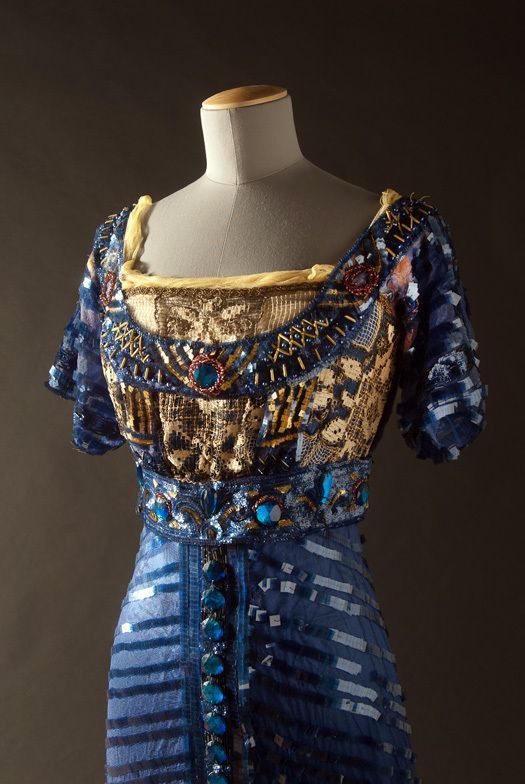
And a 1913-14 evening dress by an unknown artist:


I like to think of Remy always being slightly (maybe a lot) more ahead of his time with his clothes than Anna is with hers. Remy is designing tubular dresses a few years before they started to become a fashionable silhouette. Ironically Maillot rejects them, but I find it kind of funny that by the end of the decade, he'll have been wishing his house had set the trend Remy had conceived of years before.
At SOME POINT I will draw how I envision the dresses to be. I HOPE.
If you want to see my moodboard for this story, you can catch it on Pinterest here.
#The Tailor & The Seamstress#fanfic#meta#reading aid#historical fashion#historial fiction#historical fic
27 notes
·
View notes
Text

AI Helps Decipher First Text of Unreadable Ancient Herculaneum Scroll
With the help of artificial intelligence, a colorful ancient Greek word has emerged from a text damaged in the A.D. 79 eruption of Vesuvius, marking an important milestone in the centuries-long attempt to decipher an unparalleled ancient library assumed to be lost forever.
That word, πορφύραc, referring to purple dye or purple-colored clothes—a color closely associated with royalty and power—comes from one of the famed Herculaneum scrolls discovered by workers digging up the ancient town of Herculaneum near Pompeii in 1752. The roughly 1,800 unearthed papyrus scrolls—believed to contain literary and philosophical works from the first and second centuries B.C.—had been reduced to brittle, charred lumps by the heat and gasses of the eruption. And those carbonized scrolls that workers didn’t throw away more than 250 years ago have largely languished since then in storerooms, written off as unreadable curiosities.
Technological developments over the past two decades have helped researchers get closer to being able to “read” the fragile scrolls. But only the very recent acceleration of artificial intelligence and computing have finally made it possible to begin unlocking their secrets—all without opening them.
Researchers backed by Silicon Valley investors put decoding efforts into overdrive this spring by launching the Vesuvius Challenge.The global competition offers prize money for significant benchmarks in coaxing the long-lost Herculaneum texts from their carbonized husks by applying machine learning techniques to digital images of the scrolls.
The challenge awarded its first installment of the $1 million total prize pot today to two competitors—an American college student and an Egyptian graduate student in Germany—who separately revealed at least 10 letters from a single small area of an intact scroll, including the colorful and complete “πορφύραc.”
With this achievement, scientists say they are now one step closer to being able to read full passages and—someday—entire scrolls that had previously been considered unreadable.
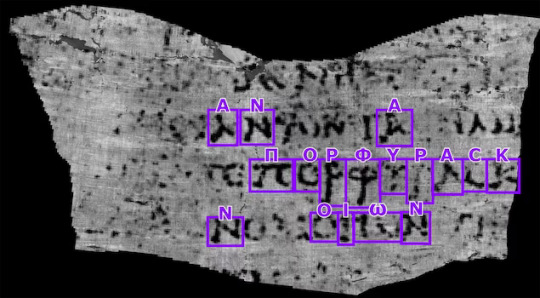
“We knew if we could read just one [scroll], then all the other ones would be available with the same method or some augmented method,” says Brent Seales, a computer scientist at the University of Kentucky who’s been trying to decode the Herculaneum scrolls for the last 20 years and leads the university’s Digital Restoration Initiative. “And this is a big moment because we are now proving not just to ourselves but to the entire global community that the scrolls are readable.”
Reading the Herculaneum scrolls, he says, will help connect us to the past in “astounding” ways.
“These people were humans just like us,” Seales adds. “These were intellectuals. Their thoughts were complex. It says something about what it means to be human to be able to read a thought that came directly from a single person or a group of people so long ago.”
An era ‘shrouded in mystery’
Since the mid-1700s, people have made various attempts at reading some of the less damaged scrolls from Herculaneum. One method involved cutting the scrolls in half and scraping away layers one at a time to see the text inside; another involved slowly unwinding the scrolls with a specially built machine. Though these 18th and 19th century efforts did allow conservators to copy down some of the words inside, they often damaged—or, worse, totally destroyed—many of the scrolls in the process.
Many of the previously opened scrolls revealed Greek philosophical texts, including some by philosophers Epicurus and Philodemus. But, by and large, the contents of the unopened scrolls are unknown—and that’s part of what makes the quest to open them so enticing. On top of that, the Herculaneum scrolls, discovered in a villa likely belonging to Julius Caesar’s father-in-law, represent the largest known surviving library from classical antiquity. Revealing their texts would be a boon to historians and to our collective understanding of the past.
“Some 95 percent of the material from the classical period is lost, so we just don’t have anything, and yet we know it was one of the most important philosophical periods of humanity,” says Seales. “It’s an era shrouded in mystery for which we’ve lost most of the material.”




Between 500 and 600 carbonized scrolls from Herculaneum—kept in museum, university and national collections in England, France and Italy—remain unopened, though the exact figure is hard to estimate because many are fragmented. The scrolls are extremely brittle, which means physically unrolling them is not a viable option. “If you drop one, it would shatter like glass,” Seales explains.
Technological advancements since the early 2000s have helped researchers overcome this hurdle, including using CT scans to make 3D images of ancient scrolls. From there, the Digital Restoration Initiative team developed software that could “virtually unwrap” the 3D images to produce flattened segments. This method enabled them to read previously hidden text from the Ein Gedi scroll, a charred and fragmented scroll from the Middle East dated to the third or fourth century A.D.
When researchers tried to use this method to read the scrolls carbonized by Vesuvius, however, they ran into another roadblock. The ink used on the Ein Gedi scroll contained metal, which meant the letters were visible on the CT scan. The Herculaneum scrolls, by contrast, were written with carbon-based ink, which, to the human eye, makes the symbols indistinguishable from the carbonized papyrus on the CT scans.
Undeterred, researchers wondered if higher-resolution scans of the scrolls produced by a particle accelerator could provide an even more detailed view of the carbonized papyrus. Sure enough, at very high resolutions, the scans revealed visible areas where the ink slightly altered the shape and texture of the papyrus fibers. “The carbon-based ink sort of fills in the holes that are the grid of the papyrus—it coats them and makes them a little thicker,” says Seales.

Seales and his Digital Restoration Initiative colleagues then developed and trained a machine learning model to detect these subtle differences in the carbonized papyrus surfaces. But to take the project any further, they needed human beings to help. That’s where the Vesuvius Challenge comes in. Hoping to harness the collective power of citizen scientists around the world, Seales teamed up with Silicon Valley investors and put his team’s data, code, and methods online for anyone to access. The challenge’s pitch? After 275 years, the puzzle of the Herculaneum scrolls has been reduced to a software problem—one that anyone, anywhere with access to a computer could, in theory, contribute to solving.
In March, the challenge team released thousands of 3D images of two rolled-up scrolls, as well as a machine-learning algorithm trained to detect the invisible letters and symbols written on the layers of carbonized papyrus. They also offered $1 million in prize money to incentivize participants to build upon the AI technology and, ultimately, speed up the deciphering.
Two competitors extracted the new snippet of text separately: Luke Farritor, a 21-year-old undergraduate at the University of Nebraska-Lincoln, and Youssef Nader, a 26-year-old doctoral student at Freie Universität Berlin. Because Farritor revealed the text first, he wins $40,000, while Nader wins $10,000. Papyrologists also authenticated their findings.
Still on the line is the $700,000 grand prize, which will go to the first person or team that can reveal at least four separate passages from the two scrolls. Each passage must contain at least 140 characters of continuous text, with no more than 15 percent of the characters missing or illegible, by the end of 2023.
Citizen scientists can find everything they need online, from the history of the scrolls themselves to downloadable data, algorithms, and tutorials. And while the contest is open to anyone, it’s technical work that’s so far mostly attracted computer scientists who are already well-versed in machine learning. Competitors are helping advance the project forward by virtually unwrapping additional sections of scrolls via software and methods developed by Seales; they’re also working to improve the machine learning model by providing it with additional training examples from the newly unwrapped digital segments of papyrus.



‘The scrolls are readable’
The competitors—an estimated 1,500 to 2,000 of them in total, according to Seales—have done their part. In just six months, they’ve made huge strides toward solving this puzzle, including the three full lines of text that Farritor and Nader recently revealed. “We’ve seen 10 or 20 person years of work from these competitors,” says Seales.
So, what’s motivating the contestants to volunteer hours and hours of their time toward the project? The prize money is a big factor (both Nader and Farritor say they want to win the grand prize) but, on top of that, some competitors are simply intrigued by the scrolls themselves. “When things were a bit frustrating and things were not working, I felt like I was unable to give up because I was just too curious—I really need to know what’s going on here,” says Nader.
There’s also the allure of working on a project backed by Silicon Valley entrepreneurs and investors. Former GitHub CEO Nat Friedman launched the contest, along with venture capitalist Daniel Gross; other startup founders and investors also chipped in prize money. “There’s kind of this Silicon Valley prestige,” says Farritor, who spent the summer interning at SpaceX.
From here, the machine learning model should continue to improve even more and reveal additional letters until, ideally, researchers will be able to decipher all of the Herculaneum scrolls. These efforts could pave the way for future excavation work at Herculaneum, where some experts believe even more scrolls are still buried.
“Some people might think, ‘What are you going to all that trouble for?’ but I don’t believe that,” says Seales. “This is an amazing period in human history. We’re talking about more works from that period. Yeah, I want more, I want it all.”
By Sarah Kuta.
#AI Helps Decipher First Text of Unreadable Ancient Herculaneum Scroll#Mount Vesuvius#herculaneum#herculaneum scrolls#Villa of the Papyri#pompeii#ancient artifacts#archeology#archeolgst#history#history news#ancient history#ancient culture#ancient civilizations#roman history#roman empire#roman art#long reads
63 notes
·
View notes
Text
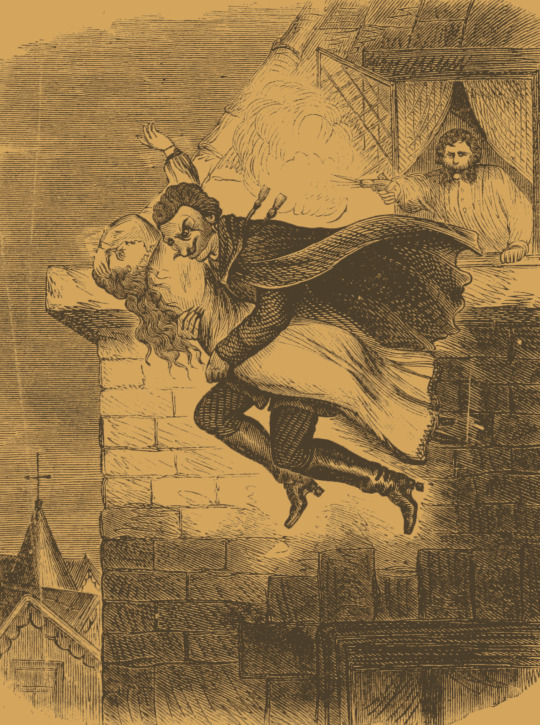
Spring-heeled Jack
Spring-heeled Jack is a legendary figure from Victorian-era England known for his strange and menacing appearances. Reports and accounts of Spring-heeled Jack emerged in the early 19th century and persisted for several decades, sparking fear and fascination among the public.
According to various witness testimonies, Spring-heeled Jack was described as a tall, thin, and agile figure who wore a dark cloak or suit. He was said to possess incredible jumping abilities, leaping great distances or scaling buildings with ease. Reports also mentioned that he had glowing red eyes and could breathe out blue and white flames.
Spring-heeled Jack was notorious for his alleged attacks on individuals, especially women. He was said to ambush victims at night, jumping out from dark corners or rooftops and frightening them with his peculiar appearance and behavior. Some reports claimed that he assaulted his victims by clawing at their faces or clothing before bounding away into the darkness.
The legend of Spring-heeled Jack spread rapidly through newspapers and word of mouth, causing widespread panic and sensationalism. The mysterious nature of the figure led to numerous rumors and speculations about his origins, motives, and even supernatural abilities.
Although many believed Spring-heeled Jack to be a real entity, some accounts were likely exaggerated or fabricated. Over time, the legend became intertwined with folklore and urban myth, and various theories emerged suggesting possible explanations for the phenomenon, ranging from a mischievous prankster to a demonic entity.
The exact identity and true nature of Spring-heeled Jack remain unknown to this day. The legend has left a lasting impact on popular culture, inspiring numerous literary and theatrical adaptations and becoming a symbol of Victorian-era urban folklore and terror.
Read more
#spring heeled jack#folklore#wikipedia#weird facts#weird history#strange facts#strange history#random fact#weird wikipedia#wikiweird#history
88 notes
·
View notes
Text
NASA's Chandra Rewinds Story of Great Eruption of the 1840s
Using snapshots taken over 20 years with NASA’s Chandra X-ray Observatory, astronomers have learned important new details about an eruption from Eta Carinae witnessed on Earth in the mid-19th century.
Chandra data spanning decades has been combined into a new movie that contains frames of Eta Carinae from 1999, 2003, 2009, 2014, and 2020. Astronomers used the Chandra observations, along with data from ESA’s (European Space Agency’s) XMM-Newton, to watch as the stellar eruption from 180 years ago continues to expand into space at speeds up to 4.5 million miles per hour. The new insights gleaned from Eta Carinae show how different space observatories can work together to help us understand changes in the universe that unfold on human timescales.
Eta Carinae is a system that contains two massive stars (one is about 90 times the mass of the Sun and the other is believed to be about 30 times the Sun’s mass). In the middle of the 19th century, Eta Carinae was observed to experience a huge explosion that astronomers have dubbed the “Great Eruption.” During this event, Eta Carinae ejected between 10 and 45 times the mass of the Sun. This material became a dense pair of spherical clouds of gas, now called the Homunculus Nebula, on opposite sides of the two stars.
A bright ring of X-rays around the Homunculus Nebula was discovered about 50 years ago and studied in previous Chandra work. The new movie from Chandra, plus a deep image generated by adding the data together, reveal important hints about Eta Carinae’s volatile history, including rapid expansion of the ring and a previously unknown faint shell of X-rays outside it.
“We’ve interpreted this faint X-ray shell as the blast wave from the Great Eruption in the 1840s,” said Michael Corcoran at NASA’s Goddard Space Flight Center in Greenbelt, Maryland, who led the study. “It tells an important part of Eta Carinae’s backstory that we wouldn’t otherwise have known.”
Because the newly discovered outer X-ray shell has a similar shape and orientation to the Homunculus Nebula, Corcoran and his colleagues think both structures have a common origin.
The idea is that material was blasted away from Eta Carinae well before the 1843 Great Eruption — sometime between 1200 and 1800, based on the motion of clumps of gas previously seen in data from NASA’s Hubble Space Telescope. Later, the fast blast wave from the Great Eruption tore through space, colliding with and heating the clumps to millions of degrees to create the bright X-ray ring. The blast wave has now traveled beyond the bright ring.
“The shape of this faint X-ray shell is a plot twist in my mind,” said co-author Kenji Hamaguchi, a researcher at the University of Maryland, Baltimore County, and NASA Goddard. “It shows us that the faint shell, the Homunculus, and the bright inner ring likely all come from eruptions from the star system.”
With XMM-Newton, the researchers saw that the X-ray brightness of Eta Carinae has faded with time, agreeing with previous observations of the system obtained with NASA’s Neutron Star Interior Composition Explorer (NICER) telescope on the International Space Station. The authors applied a simple model to estimate how bright Eta Carinae was in X-rays at the time of the Great Eruption and combined this with the speed of the material — determined from the movie — to estimate how quickly the high-speed gas was ejected.
The researchers combined this information with an estimate of how much gas was ejected to determine that the Great Eruption likely consisted of two explosions. There was a first, quick ejection of a small amount of fast, low-density gas which produced the X-ray blast wave. This was followed by the slower ejection of dense gas that eventually formed the Homunculus Nebula.
A team led by Nathan Smith of the University of Arizona, one of the co-authors of the new X-ray study, has previously suggested that the Great Eruption was caused by the merger of two stars, in what was originally a triple system. This would also explain the ring-like structure seen in X-rays because it would cause material to be ejected in a flat plane.
“The story of Eta Carinae just keeps getting more interesting,” said Smith. “All evidence is suggesting that Eta Carinae survived a very powerful explosion that would normally obliterate a star. I can’t wait for the next episode of data to find out what other surprises Eta Carinae has in store for us.”
38 notes
·
View notes
Text
Entertaining Bigfoot Stories
The essay on Bigfoot, a figure entrenched in North American lore, effectively compiles some of the most intriguing and famous stories connected to this enigmatic creature. It spans a breadth of encounters that have significantly influenced the public's perception of Bigfoot, ranging from the iconic Patterson-Gimlin film to personal accounts like that of Albert Ostman.
The essay begins by setting a historical context, then delves into detailed narratives starting with the Patterson-Gimlin film, which arguably offers the most compelling visual evidence of Bigfoot's existence. The analysis of the film is meticulous, emphasizing the cryptozoological significance of Frame 352 and highlighting the debates surrounding the footage's authenticity. This segment succeeds in illustrating why the film remains a focal point in Bigfoot folklore.
Further, the essay explores less visually substantiated, but equally captivating stories such as the Ape Canyon attack and the alleged kidnapping by a Bigfoot family experienced by Albert Ostman. These accounts are presented with a good balance of skepticism and openness, allowing readers to ponder the plausibility of such encounters. Each story is richly described, providing insights into the historical and cultural impact of these events on Bigfoot mythology.
Moreover, the inclusion of the Jerry Crew footprints adds a crucial narrative about the evolution of the Bigfoot legend, particularly how it entered popular culture. The revelation of a potential hoax in this account introduces a critical perspective on the credibility of such evidence, which enriches the discussion by acknowledging the complexities involved in myth-making.
The essay also incorporates a historical account from Theodore Roosevelt, which adds a layer of gravitas and extends the timeline of Bigfoot lore back into the 19th century. This story serves as a reminder of how long this creature has been part of North American storytelling and the enduring fascination it inspires across different eras.
In conclusion, the essay is well-structured and informative, presenting a comprehensive overview of some of the most pivotal moments in Bigfoot lore. It skillfully balances folklore with critical analysis, allowing the reader to explore the intriguing intersection between myth and perceived reality. The narratives are engaging and are likely to captivate anyone interested in the mysteries of the unexplained. The essay not only entertains but also invites readers to reflect on the larger implications of these stories on our understanding of nature, the unknown, and the boundaries of human belief systems.
11 notes
·
View notes
Text

Baroque portal and cypresses on a Mediterranean shore by Ferdinand Keller
An ethereal female figure, cloaked like an antique column, pensive and deeply immersed in unfathomable thoughts, stands, as if sprung from the shadowy realm of a Homeric heroic epic, at the mysterious, cypress-covered bay of a dimly abysmal lyrical fantasy landscape, a place where time seems to stand still.
This almost otherworldly, ghostly dream world, idealised to elegant aloofness, springs from the dark, diffuse light and intoxicating, sultry musky haze of the sophisticated salon world of the late 19th century. In the spirit of «l'art pour l'art», this symbolist composition is detached from comprehensible plot contexts and rather a painted poem, dreamlike, albeit ominous in content.
In his later work, Ferdinand Keller abandoned the opulently staged heroism and pompous character of his history painting. Instead he devoted himself to an examination of his contemporary model, the symbolist painter Arnold Böcklin, who inspired him to create transcendent dream visions of a Mediterranean-antique character with a sombre, occult quality. Above all, Böcklin's most influential and enduringly successful pictorial invention, «The Isle of the Dead», an incunabulum of the late Romantic longing for death and of the decadent «fin de siècle», inspired the professor at the Akademie Karlsruhe to create this hitherto unknown masterpiece, which has remained in aristocratic private ownership since its creation.
#ferdinand keller#art#baroque#portal#gate#gateway#cypresses#mediterranean#shore#coast#sea#symbolist#romantic#europe#european#antiquity#architecture
157 notes
·
View notes
Text


Pink Silk Dress, Early 19th Century, American.
MFA Boston.
#pink#silk#womenswear#extant garments#dress#mfa boston#american#usa#early 19th century#19th century#unknown decade 19th century#magenta
14 notes
·
View notes
Text
Deadline Detroit | Slavery is Detroit's big, bad secret. Why don't we know anything about it?

Metro Detroiters love to celebrate their local history, especially when it involves the noble, magnificent and world-class chapters of the past: The auto industry. Motown Records. The Underground Railroad. Diego Rivera. Coney Islands.
On the other hand, local history has its crazy uncles. Those are chapters that might be fascinating and important, but they are hidden in the back room and rarely talked about. Henry Ford’s anti-Semitism, taking land from the Indians, the Free Press’ 19th Century racism and the auto companies’ early abuse of workers come to mind.
Then there is the granddaddy of all forgotten local history. The subject no one talks about, virtually ever. The most neglected topic of all.
youtube
Slavery.
Slavery in Detroit has remained an enormous secret. It is an essential chapter in Detroit’s 311-year story, but it has been pushed back into archives and covered up by decades of neglect and denial. Few people, even well-informed college graduates, know that slavery played a key role in the growth of Detroit, and wealthy Detroiters owned slaves for the first 120 years of the city's existence.
When metro Detroiters talk about slavery, they talk about black men and women picking cotton in Georgia and Mississippi because that is what students in southeastern Michigan learn in school.
Yet slavery is very much homegrown. What has been called the “national sin” is also Detroit’s sin. It is the origin of our racial crisis, our peculiar institution, our “necessary evil.” Slavery belongs to Detroit just like slavery belongs to Charleston, Monticello and New Orleans.
Many roads, schools and communities across southeast Michigan carry the names of old, prominent families that owned slaves: Macomb, Campau; Beaubien; McDougall; Abbott; Brush; Cass; Hamtramck; Gouin; Meldrum; Dequindre; Beaufait; Groesbeck; Livernois and Rivard, among many others.
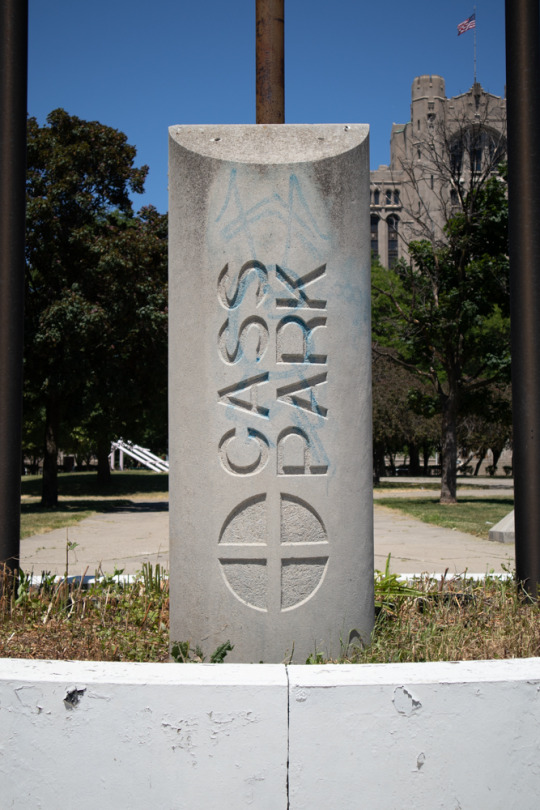
Detroit’s first mayor, John R. Williams, the namesake of two streets in Detroit – John R and Williams – owned slaves. The Catholic Church in Detroit was heavily involved in slavery – priests owned slaves and baptized them, and at least one slave worked on the construction of Ste. Anne’s Church around 1800. The men who funded the Free Press when it was founded in 1831 were ex-slave owners, and the paper supported slavery during the national debate before the Civil War.
The work of slaves helped build Detroit. And just like in the South, slavery in Detroit was reinforced by violence. Slaves worked without any pay for their entire lives, under threat of the lash and death.
Owners used their power over slaves to steal their labor and enrich themselves. Slaves arrived in Detroit stripped of their identity, culture, family and often their name. They were frequently maimed from torture.
Slaves died, often young, and were buried in graveyards that were soon forgotten, and then paved over by later generations of Detroiters, and their bones remain underfoot in America’s blackest big city, and their stories continue to be unknown in a region where race always has been a consuming issue.
Slavery was as much a part of early Detroit as the fur trade. Most residents who could afford slaves owned them during Detroit’s French, British and early American periods, from the city’s founding in 1701 to the second decade of the 19th Century. In 1750, for example, toward the end of the French regime, more than 25 percent of Detroit residents kept slaves.
“Not surprisingly, Detroit’s slaveholders came from the wealthiest segment of French society and produced a disproportionate amount of the village’s grain and livestock,” writes Brett Rushforth in “Bonds of Alliance,” a new book about slavery in Quebec and the Great lakes area in the 17th and 18th centuries.
Rushforth’s book touches upon the subject of slavery in Detroit, and in so doing he helps raise the veil on the city’s hidden history. Another academic, the University of Michigan’s Tiya Miles, has begun researching the subject, and earlier this year she told NPR’s Michel Martin that slavery “had a multilayered aspect in Detroit.”
There are almost no physical reminders of slavery left in Detroit. But one artifact that remains is a scarred and cracked account book that has yellowed and brittle pages. It sits in storage in the Burton Historical Collection at the Detroit Public Library. The book belonged to William Macomb, the richest person in Detroit when he died in 1796.
Macomb owned Grosse Ile and Belle Isle and several houses and page after page of livestock, tools and furniture. Macomb also owned people. Listed prominently near the front of the book along with things like shovel tongs, saddle bags and goats, are the names of, or references to, 26 human beings: Scipio, Tom, Guy, Charlie… Only one, Jim Girty, had a family name. Together, the slaves’ total value was listed as 1,655 pounds in New York currency.

In his will, Macomb wrote: “I give and bequeath to my loving wife, Mrs. Sarah Macomb, for her own use, all my moveable estate wheresoever…my slaves, cattle, household furniture, books, plates, linen, carriages and my utensils of husbandry.”
I examined that book last week, with a librarian and photographer. It is stark. We acknowledged that it felt strange to look at a simple page with lovely penmanship that represents a national horror involving so much human suffering.
Detroit’s history of slavery is complicated by the fact that African Americans were not the only people held in captivity. Native Americans were also enslaved here, especially during the early decades of the 18th Century when the French ran Detroit.
Indian slavery pre-dated the arrival of Europeans, and it was a very different system than the form of black slavery that Europeans brought to North America. Indians did not consider slaves property, and in native culture slaves possessed symbolic value, and were used as gifts during trade and negotiations, and to take the place of dead warriors.
Eventually, though, Indian slavery mixed with European slavery and produced a hybrid form of bondage that played a major role in relations among Indians and Europeans in Detroit throughout the 18th Century.
Slavery was important, for example, in the interaction between men and women. Traders in Detroit’s early days used female Indian slaves as backcountry wives, both for companionship and as a way to ingratiate themselves with the women’s relatives, which enhanced the traders’ ability to do business with the Indians.
During the British era, one of Detroit’s most successful traders was John Askin, who had three children with an Ottawa woman named Monette, a slave he owned and later freed. Askin was known for his aggressive business tactics, including plying Indians with alcohol. His papers, also preserved at the Burton Collection, show he bought and sold several native and black slaves during his career.
“Rum and sex paved the way for Askin’s success,” wrote historian E.A.S. Demers.
“Sexual violence permeated the slave experience” in the Great Lakes, wrote Rushforth. Many women, he added, like Monette, eventually rose to social acceptance and freedom, but not before a “prolonged submission to what could be defined as serial rape.”
Whether male or female, life was harsh for slaves on the Detroit frontier. They generally slept on the kitchen floors of Detroiters’ homes, and the record is clear that owners did not hesitate to flog their human property when they believed discipline was called for.
Yet in slavery's scale, Detroit was not South Carolina. Detroit’s simple trading economy, small population and modest farms did not require large numbers of slaves, and slaves in Detroit generally lived in closer proximity to their owners than slaves in the south.
Slaves never exceeded 10 percent of the population in Detroit; in the south before the Civil War, slaves made up 33 percent of the population. In Detroit, Macomb was the biggest slave owner, with a couple of dozen slaves; in Virginia, Thomas Jefferson owned some 600 slaves in his lifetime. Jorge Castellanos, a former professor at Marygrove College, once wrote that Detroit was not a “slave society,” but a “society with slaves.”
Forgetting
Grosse Ile, once owned by William Macomb, is the largest island in the Detroit River. Residents have done a lot to keep alive the community’s long history. But no one knew anything about the Macomb family owning slaves until Joel Thurtell, a Detroit Free Press reporter, brought it to their attention while he was doing a story in 2007.
Denise de Beausset, who is Macomb’s great-great-great-great-great granddaughter, told Thurtell: “No, I wasn’t aware of them having slaves at all. That’s funny; you’d think there would have been talk about slaves running the farm. Nobody ever talks about it on our side. I wonder if it was out of embarrassment or it wasn’t politically correct. Nobody ever talked about slaves. I’ll be darned.”
I have two friends whose roots in Detroit go back to the French period of the early 1700s. When I told them their ancestors had owned slaves, they thought I was joking. One friend, who had researched her family’s history, was flabbergasted when I broke the news.
“NO WAY!” she said. “Wow! Nobody told me anything about that, but I guess they wouldn’t. I am just embarrassed. That’s interesting. Fascinating.”
They are hardly alone in their obliviousness. Students of local history could research Detroit’s past for years before they would stumble across evidence of slavery. Since the early 1970s, slavery in Detroit has been the subject of research by a small number of scholars, who wrote academic articles that were mostly read by other academics and advanced students.
One graduate student, Arthur Kooker, wrote his doctoral dissertation in 1941 at the University of Michigan on abolitionists in Michigan before the Civil War. In his preface, Kooker wrote about his surprise when he discovered slavery itself had existed in Michigan.
“As the work progressed one fact that seemed to require an exploration kept bobbing up,” he wrote. “Rooted deep in Michigan’s past was the very institution which had called the antislavery movement into being.”
Remembering
During the first years of the 21st Century, many Americans discovered the story of slavery in the United States, especially as it existed outside the south. Prodded by activists and historians, a number of institutions and individuals acknowledged their historic ties to slavery and other extreme racist behavior, and in many cases asked for forgiveness.

A partial list of those performing a self-examination, and often issuing an apology or moving for reconciliation, includes President Bill Clinton (on behalf of the United States); Brown University; Yale University; Harvard University; Wilmington, N.C.; New York City; Philadelphia, Miss.; Duluth, Minn.; Birmingham, Ala.; London, England.; various insurance companies; the Southern Baptist Convention; the U. S. Senate; the Hartford Courant, the Raleigh News and Observer; the Lexington, Kentucky, Herald-Leader; J.P. Morgan Chase and several other banks.
Ira Berlin, one of the nation’s foremost historians of slavery, wrote in 2006 that “slavery has a greater presence than at any time since the end of the Civil War.”
Slowly, the curtain has begun to rise across the country on slavery and other forms of historical racism. Most notably, the collective amnesia is disappearing that allowed the north to absolve itself of involvement in slavery while castigating the south. People are realizing that understanding slavery is central to understanding the origins of America itself.
Detroit’s selective memory, however, has remained intact. Almost nothing has been done to seek out the truth about the role of slavery in Detroit’s history. And that seems unfortunate in a region where the theoretical underpinning of slavery – racism – remains a paramount issue.
It’s not a happy story. It’s probably not a coincidence that we celebrate the uplifting saga of the Detroit and the Underground Railroad rather than the tremendously sad story of Detroit and human captivity. For a nation – and city -- built on the notion of freedom, to consider the idea that slavery was also a major part of the foundation is difficult and disillusioning.
But telling the truth about our history can be a start on telling the truth about today.
“Slavery is the ground zero of race relations,” Berlin has written. “There is a general, if inchoate, understanding that any attempt to address the question of race in the present must also address slavery in the past.”
► Related: Detroit Landmarks And Roadways, And The Slave Owners They Were Named For
#Detroit#michigan#Slavery is Detroit's big#bad secret. Why don't we know anything about it#slavery in Detroit#slavery in michigan#northwest ordinance 1812#michigan territories#Youtube
15 notes
·
View notes
Text
Xenosaga Fan Translates Full Playthrough of Canonical Phone Game, Pied Piper
Noisy Pixel Source. Possible Spoilers for Xenoblade Chronicles 3 below.

To celebrate the 19th anniversary of the largely unknown Xenosaga: Pied Piper, fan @ValakTurtle has announced that they have translated an entire playthrough of the game on YouTube by @Keju_frangelico. Additionally, “the translation was built on top of Chaoslace’s original translation that was hosted on Zarathustra.”
The script was previously translated, but an in-game translation was absent.
For those unaware, Xenosaga: Pied Piper is a canonical entry in the series that is essentially required reading to fully understand and appreciate the events of Xenosaga Episode III. Given the title’s exclusive presence on mobile phones plus its lack of official localization, it’s not really known by those who haven’t played the Xenosaga games.
In fact, while it has been over a decade since I last played Xenosaga, I (think?) I remember Episode III trying to recap the events of Piped Piper because it is actually significant. As a result, it’s recommended to check out Pied Piper after playing Xenosaga Episode II, despite it taking place roughly a century before the events of the first game.
Piped Piper is arguably more vital to experience than Xenosaga: A Missing Year, which connects Xenosaga Episode II and Episode III.
If you’re a Xenosaga fan and have never delved into Pied Piper, this is a pretty fantastic way to do so. Honestly, huge thanks to @ValakTurtle for deciding to translate this playthrough with English captions. It even appears they’ve translated the menus during battles, which is a pretty intense and intricate step.
You can check out the full Xenosaga: Pied Piper playthrough playlist here or start watching the first episode below:
youtube
Earlier this year, fans united for G-MODE Archives to officially re-release Piped Piper.
Speaking of Xenosaga, the conclusion of the Xenoblade Chronicles 3 Future Redeemed storyline has seemingly opened up the possibility of a Xenosaga revival or continuation.
#Xenosaga: Pied Piper#Xenosaga#Xeno Series#Monolith Soft#Bandai Namco#fan translation#Noisy Pixel#I really hope the Xenosaga games do get a rerelease/remaster at some point.#And .hack IMOQ as well.
49 notes
·
View notes
Photo

Was Russian 'Bigfoot' actually an African slave?
A leading British geneticist, who recently found the DNA key that could answer the mystery of the ‘Yeti’, has now solved the riddle of Russia’s own Bigfoot, ‘Zana’.
Bryan Sykes, Professor of Human Genetics at the University of Oxford, has carried out DNA tests on saliva samples taken from descendants of Zana - a so-called ‘wild woman’ captured in the late 19th century in southern Russia, who local people believe was an ‘Almasty’.
Professor Sykes’ research (part of a worldwide analysis of alleged Bigfoot samples), has yielded a remarkable result: that Zana's ancestry was 100% Sub-Saharan African and that she was most probably a slave brought to the region by the ruling Ottomans.
His findings feature in a new Channel 4 documentary series, Bigfoot Files (November 3rd), presented by Mark Evans, who is on a global quest to unlock the real story of Bigfoot.
Zana’s story is extraordinary. She is said to have been captured in the forests of Abkhazia, a remote part of Russia’s Caucasus region, in the 1870s. Imprisoned, it's said, for two decades by a local landowner, she was described by eyewitnesses as being ‘very big, strong, her whole body covered with hair’. Chillingly, Zana had four children with local men.
Russia's 'Almasty Hunters' have been obsessed with her story for over half a century and have always believed that Zana could be a surviving Neanderthal, the human-like species that is thought to have died out tens of thousands of years ago.
To answer the riddle and establish what species she belonged to, Professor Sykes has tested samples from six of Zana's living descendants. He has also recovered DNA from a tooth taken from the skull of one of her sons, Khwit. Such work is highly specialized and Sykes was the first geneticist ever to extract DNA from ancient bone.
The results are complex and fascinating. First, they show that Zana was, in fact, no more Neanderthal than many of the rest of modern humans. When the Neanderthal genome was sequenced in 2010 it became clear that Europeans and Asians contain around 2 to 4% of Neanderthal DNA; almost certainly the result of interbreeding.
But the big surprise in Sykes' results was that Zana's DNA is not Caucasian at all, but African. Khwit's tooth sample confirms her maternal African ancestry and the saliva tests on the six living descendants show that they all contain African DNA in the right proportions for Zana to have been genetically 100% sub-Saharan African.
“The most obvious solution that springs to mind is that Zana or her ancestors were brought from Africa to Abkhazia as slaves, when it was part of the slave trading Ottoman Empire, to work as servants or labourers,” says Professor Sykes. “While the Russians ended slavery when they took over the region in the late 1850s, some Africans remained behind. Was Zana one of them, who was living wild in the forest when she was captured?“
But that theory would not explain her extraordinary features, described by reliable eyewitnesses. There is an even more intriguing alternative theory. Having carefully studied the skull of Zana's son, Khwit, Professor Sykes believes there are some unusual morphological skull features – such as very wide eye sockets, an elevated brow ridge and what appears to be an additional bone at the back of the skull – that could suggest ancient, as opposed to modern, human origins.
And Sykes has raised the bold theoretical possibility that Zana could be a remnant of an earlier human migration out of Africa, perhaps tens of thousands, of years ago. If correct, Zana could be evidence of a hitherto unknown human 'tribe', dating from a distant time when the human species was still evolving and whose ancestors were forced into remote regions, like the Caucasus mountains, by later waves of modern humans coming out of Africa.
One of the Russian Almasty hunters, Dr Igor Burtsev, offers testimony in the Channel 4 documentary that may back this theory up. He unearthed Khwit's skull in 1971 and a few years later, showed it to a group of anthropologists in Moscow. They were, he says 'amazed', and identified a mix of 'primitive' and 'progressive' (modern) features in the skull. Lacking the scientific tools at Sykes' disposal, they could take it no further. Now Sykes is able to propose the theory with some confidence.
It is only a theory at this stage - and a bold and speculative one at that. But Professor Sykes intends to study it much further before reaching his final conclusions.
Zana’s story will feature in Bigfoot Files on Channel 4 on Sunday, November 3rd at 8.00pm. In the programme Mark Evans also meets former heavyweight boxing champion of the world, seven foot tall Nikolai Valuev, who admits to having a bit of a Neanderthal look himself. He is now Duma Deputy (the equivalent of an MP) for Kemerovo in Siberia and fascinated in Almasty. The programme also investigates some of the other claimed sightings of the creatures in Russia.
The series, made by Icon Films, examines the stories behind famous Bigfoot sightings and Mark Evans meets people who believe passionately that other species of hominid exist. A book by Professor Sykes about his research The Yeti Enigma: A DNA Detective Story will be published by Coronet in Spring 2014.
47 notes
·
View notes
Text
Josephine Garis Cochran (sometimes spelled Cochrane) (1839-1913) is largely unknown now, but she should be declared the patron saint of the modern busy family. For in 1886, she patented the first commercial dishwasher.
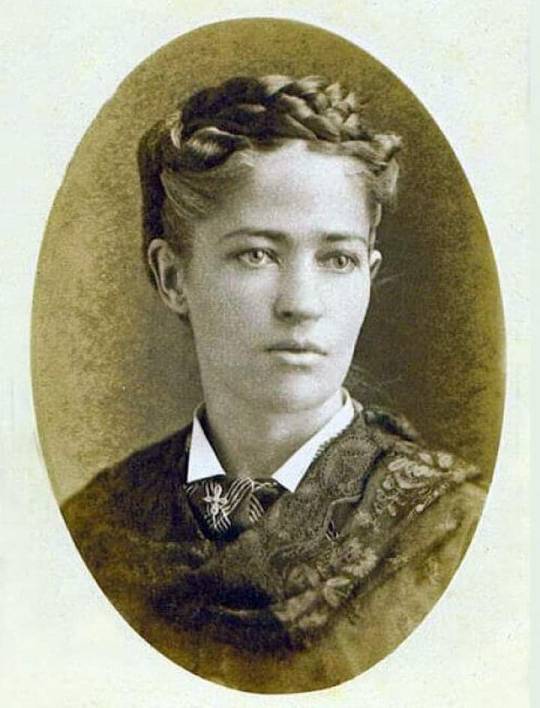
Cochran wanted a machine that would save time washing dishes, and would prevent broken crockery. She was convinced that there had to be a mechanical solution to the tedium of dishwashing. Josephine grew up in a family of engineers, but finding no one that could or would invent such a machine, she vowed, “If nobody else is going to invent a dishwashing machine, I’ll do it myself.”
So she invented a contraption of gears, belts, and pulleys that could take a cage filled with over 200 dirty dishes, and would re-appear a few minutes later with the dishes as clean as if they had been hand-washed. Her machine, unlike others that had been attempted, was the first to use water pressure rather than scrubbers to clean the dishes. It also had fitted racks to hold the dishes and cutlery in place.
Once her patent application, under the name of “J.G. Cochran” was approved, the next challenge was production. “I couldn’t get men to do the things I wanted in my way until they had tried and failed in their own,” Josephine later explained. “And that was costly for me. They knew I knew nothing, academically, about mechanics, and they insisted on having their own way with my invention until they convinced themselves my way was the better, no matter how I had arrived at it.”
In 1886, with the aid of a young mechanic named George Butters, she set to work in a woodshed behind her home bringing the first prototype to life.
Once she had the patent and a machine, she had to sell the dishwashers. Although she wanted to sell directly to women, as they would appreciate how much drudgery the machine eliminated, because very few households in the 19th century could afford to pay over $100 for an appliance, her main customers were large hotels and restaurants.
She was successful at sales, but it was very difficult to challenge the mores of the 19th century, to enter these establishments on her own. When discussing selling to a large hotel, she described it as “almost the hardest thing I ever did, I think, crossing the great lobby of the Sherman House alone. You cannot imagine what it was like in those days…for a woman to cross a hotel lobby alone. I had never been anywhere without my husband or father—the lobby seemed a mile wide. I thought I should faint at every step, but I didn’t—and I got an $800 order as my reward.”
In 1893, she exhibited her dishwashers at the Columbian Exhibition World’s Fair in Chicago, and the orders came pouring in from schools, colleges, hospitals and other large institutions. Her product, the Garis-Cochran Dishwasher was a success.
With the assistance of her business partner, George Butters, they opened a factory in 1898, Cochran’s Crescent Washing Machine Company. At first the dishwashing machines were used primarily by large businesses and institutions, but decades later, Cochran’s invention eventually evolved into the appliance considered essential by millions of householders today.
Cochran died of a stroke in 1913, a very successful businesswoman. Her company was bought out in 1926 by the Hobart Corporation which produced appliances under the KitchenAid brand. In 1986, KitchenAid was acquired by Whirlpool.
Josephine Garis Cochran was inducted into the National Inventors Hall of Fame in 2006. In 2013, on the 100 year anniversary of her death, the country of Romania (a country with which Cochran had no connection) issued a postage stamp in her honor, an indication of just how widespread her influence was.
(Text by Claire Gostling for The Dinosaur on Your Windowsill)
#women in STEM#history#19th century#victorian#engineering#interesting#no fucking terfs clowning on this post please
26 notes
·
View notes
Text
Rotate to Win: Strategies for Success on the Position Device Ground
Position devices, also known as one-armed bandits, have already been fascinating the minds of casino fanatics for decades. The exciting noise of rotating reels, the anticipation of corresponding icons, and the wish of striking the jackpot produce slot products an interesting and common type of entertainment. In this informative article, we will explore into the annals, engineering, and psychology behind slot machines, discovering the reasons why they remain an addition in casinos worldwide. Ice Casino Polska
A Brief Record:
The beginnings of position models can be tracked back to the late 19th century. The first technical slot device, named the Liberty Bell, was developed by Charles Fey in 1895. It featured three rotating reels with designs like horseshoes, diamonds, spades, minds, and the Liberty Bell. This well-known device installed the foundation for the future of slot gaming.
Evolution of Technology:
Through the years, position models have undergone substantial technological advancements. From the technical models of days gone by, they transitioned to electromechanical devices in the mid-20th century. The introduction of microprocessors in the 1970s flat just how for video slots, enabling more diverse styles, design, and advantage features.
Today, nearly all slot machines are digital and are available both in standard land-based casinos and online platforms. The integration of random number machines (RNGs) guarantees good and unbiased outcomes, while cutting-edge graphics and sound effects increase the general gaming experience.
The Psychology of Slot Gambling:
The allure of position models moves beyond the mechanics and engineering; it taps to the psychology of the players. The thought of irregular encouragement, wherever rewards are unknown, plays a role in the addictive character of position gaming. The flashing lights, celebratory looks, and the sporadic jingle of coins produce a sensory-rich atmosphere that keeps players finding its way back for more.
Themes and Selection:
Slot machines are not nearly spinning reels and corresponding symbols. The selection of themes is among the reasons for their enduring popularity. Whether it's basic fresh fruit representations, historical civilizations, dream worlds, or pop culture recommendations, there is a position device concept for every single taste. That variety assures that players may always find a sport that resonates making use of their interests.
Methods for Accomplishment:
While position models are largely games of chance, you will find methods that people may utilize to improve their gaming experience. Handling bankrolls properly, knowledge paylines and guess levels, and using bonus characteristics are important components to consider. However, it's important to consider that, ultimately, fortune plays a significant role in the outcome.
Conclusion:
Slot machines came a considerable ways because the occasions of the Liberty Bell, changing into a dynamic and engaging form of entertainment. The mixture of history, engineering, and psychology makes position gambling a captivating experience for participants around the world. As technology remains to improve, we are able to only anticipate further inventions on earth of slot devices, ensuring that the thrill of rotating reels can withstand for decades to come.
3 notes
·
View notes